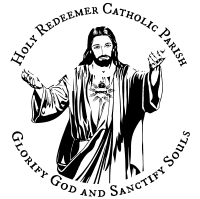The Eucharist, Part 14
Jesus Christ: Yesterday, Today, and Forever ~
Today we continue our twenty part series on the Eucharist. In case you missed the first three, you can find them here. This is in keeping with Archbishop Etienne’s pastoral letter on the Eucharist that you can find here (in case you missed it). Enjoy.
May God Bless You,
Fr. Thomas Nathe
Trent Horn, 20 Answers – The Eucharist. Catholic Answers Press. 2015
Get your own copy from Catholic.com
Question #14:
How should unconsumed eucharistic elements be disposed of? What should be done if the body or blood of the Lord is spilled or coughed up?
Just as we should never take the Lord’s name in vain, we should never treat the Lord himself in vain by acting in an irreverent or blasphemous way toward him when he is present with us in the sacrament of the Eucharist. That is why special care must be taken with the remaining elements of the precious body and precious blood after Mass has concluded.
The Code of Canon Law states: “A person who throws away the consecrated species or takes or retains them for a sacrilegious purpose incurs a latae sententiae (automatic) excommunication reserved to the Apostolic See; moreover, a cleric can be punished with another penalty, not excluding dismissal from the clerical state.” Keep in mind, however that if a person did not know this was wrong, he would not be held accountable for his actions, and so he would not be automatically excommunicated.
In order to fully understand this law we must define what it means to “throw away” the consecrated bread and wine. Most people (but unfortunately not all people) understand that the body and blood of Christ should not be discarded in a trash bin or washed down a drain into the sewer. This would be a grave act of disrespect toward the body and blood of Christ. But many people mistakenly think that there are other licit ways to discard the consecrated species.
For example, some people believe that it is acceptable to bury the Eucharist in the ground or wash the precious blood down a sacrarium, a special sink in a church that does not lead to the sewer but drains into the earth. Redemptionis Sacramentum explicitly says that anyone “casting the sacred species in the sacrarium or in an unworthy place or on the ground, incurs the penalties laid down (in the Church’s guidelines for excommunication).”
So what should be done with leftover consecrated species? Redemptionis Sacramentum goes on to say, “whatever may remain of the Blood of Christ must be entirely and immediately consumed by the priest or by another minister, according to the norms, while the consecrated hosts that are left are to be consumed by the priest at the altar or carried to the place for the reservation of the eucharist (i.e., the tabernacle).”
In the event that someone spills the precious blood, perhaps while serving Mass, the general instruction of the Roman Missal says, “The area should be washed and the water poured into the sacrarium. This does not contradict the previous instruction not to pour the precious blood down the sacrarium because once it is sufficiently mixed with water, the form of wine ceases to be and with it the precious blood present under that form also ceases to be. The elements that once constituted the precious blood may be poured down the sacrarium, just as other elements found in chalices and other liturgical wares are washed there.
The same rule applies to using water to wash a place where a partially digested or chewed eucharistic his has been expelled. The remnants of the host must be collected and then dissolved in water in the sacrarium. Even if this took place far from the sacrarium, it must still be done, because the body of Christ deserves nothing less.
Interestingly, if an insect such as a fly were to fall into the chalice, the priest has options other than to consume the creature. St Thomas Aquinas said, “It ought to be poured out, and after purifying the chalice, fresh wine should be served for consecration. But if anything of the sort (should) happen after the consecration, the insect should be caught carefully and washed thoroughly, then burned, and the ‘ablution,’ together with the ashes, thrown into the sacrarium.”

